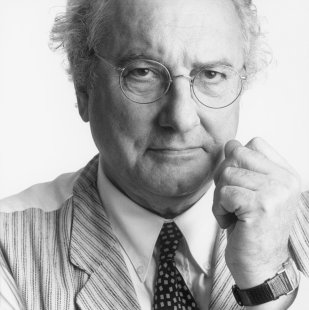
The holder of the Driehaus Prize 2022 is Rob Krier
Luxembourgish architect and sculptor Rob Krier was announced as the laureate of the Driehaus Prize for Classical Architecture on February 7, 2022. This prestigious international award for contemporary traditionalist architects, accompanied by a monetary prize of $200,000, was awarded by a committee established by the School of Architecture at the University of Notre Dame in the USA. Its members include architects Michael Lykoudis, Demetri Porphyrios, architects Melissa DelVecchio and Elizabeth Plater-Zyberk, and the founder of the town of Seaside, Robert Davis. The public ceremony for the award, which is held annually at the end of March, has been postponed for now due to the COVID-19 pandemic.
At the same time, he received the Henry Hope Reed Prize ($50,000) for the cultivation and promotion of traditional construction and art from Wendell Berry (born 1934), an American writer and environmental activist. Berry has significantly influenced the discussion on sustainable agriculture, care for traditional rural landscapes, and the ethics of human coexistence with nature.
Rob Krier was born in 1938 in the town of Grevenmacher, Luxembourg. He is the older brother of the first Driehaus Prize recipient, also a well-known traditionalist architect Léon Krier (born 1946). Rob studied architecture at the Technical University of Munich from 1959 to 1964. After graduating, he collaborated with Oswald Matthias Ungers (1965–1966) and Frei Otto (1967–1970). Since 1973, he has taught at several universities, most notably at the Technical University of Vienna (1976–1998). From 1976 to 1994, he ran his own architectural studio in Vienna. From 1992 to 2004, he shared a studio with Nicolas Lebunetel in Montpellier. In 1993, he established a joint office with Christoph Kohl in Berlin, where he now serves as a "senior advisor."
Like his brother Léon, Rob has focused in his theoretical and critical texts as well as his own realizations on researching traditional architectural language and urban planning schemes and their application in contemporary practice. His 1975 book Stadtraum drew attention. Rob Krier's rich architectural production includes residential and public buildings as well as especially cohesive multifunctional urban blocks and neighborhoods, shaped in line with local traditions. They can be found in Vienna, Berlin, Potsdam, Luxembourg, The Hague, Amsterdam, Montpellier, Bilbao, and other European cities.
More information >
At the same time, he received the Henry Hope Reed Prize ($50,000) for the cultivation and promotion of traditional construction and art from Wendell Berry (born 1934), an American writer and environmental activist. Berry has significantly influenced the discussion on sustainable agriculture, care for traditional rural landscapes, and the ethics of human coexistence with nature.
Rob Krier was born in 1938 in the town of Grevenmacher, Luxembourg. He is the older brother of the first Driehaus Prize recipient, also a well-known traditionalist architect Léon Krier (born 1946). Rob studied architecture at the Technical University of Munich from 1959 to 1964. After graduating, he collaborated with Oswald Matthias Ungers (1965–1966) and Frei Otto (1967–1970). Since 1973, he has taught at several universities, most notably at the Technical University of Vienna (1976–1998). From 1976 to 1994, he ran his own architectural studio in Vienna. From 1992 to 2004, he shared a studio with Nicolas Lebunetel in Montpellier. In 1993, he established a joint office with Christoph Kohl in Berlin, where he now serves as a "senior advisor."
Like his brother Léon, Rob has focused in his theoretical and critical texts as well as his own realizations on researching traditional architectural language and urban planning schemes and their application in contemporary practice. His 1975 book Stadtraum drew attention. Rob Krier's rich architectural production includes residential and public buildings as well as especially cohesive multifunctional urban blocks and neighborhoods, shaped in line with local traditions. They can be found in Vienna, Berlin, Potsdam, Luxembourg, The Hague, Amsterdam, Montpellier, Bilbao, and other European cities.
More information >
The English translation is powered by AI tool. Switch to Czech to view the original text source.

0 comments
add comment
Related articles
0
07.03.2025 | The holder of the Driehaus Prize 2025 is Liam O’Connor
0
08.03.2024 | The holder of the Driehaus Prize 2024 is Peter Pennoyer
0
19.04.2023 | The holder of the Driehaus Prize 2023 is Ben Pentreath
0
24.02.2021 | The holder of the Driehaus Prize 2021 is Sebastian Treese
0
24.03.2020 | The holder of the Driehaus Prize 2020 is Ong-ard Satrabhandhu
0
07.02.2019 | The holder of the Driehaus Prize 2019 is Maurice Culot
0
19.01.2018 | The holders of the Driehaus Prize 2018 are Marc Breitman and Nada Breitman-Jakov
0
23.02.2017 | <span style="font-weight:bold;">The holder of the Driehaus Prize 2017 is Robert Adam
1
04.02.2016 | The holder of the Driehaus Prize 2016 is Scott Merrill
0
22.01.2015 | The holder of the Driehaus Prize 2015 is David M. Schwarz
0
03.01.2014 | The holder of the Driehaus Prize 2014 is Pier Carlo Bontempi
0
15.12.2012 | The holder of the Driehaus Prize 2013 is Thomas Beeby
0
02.01.2012 | The holder of the Driehaus Prize 2012 is Michael Graves










